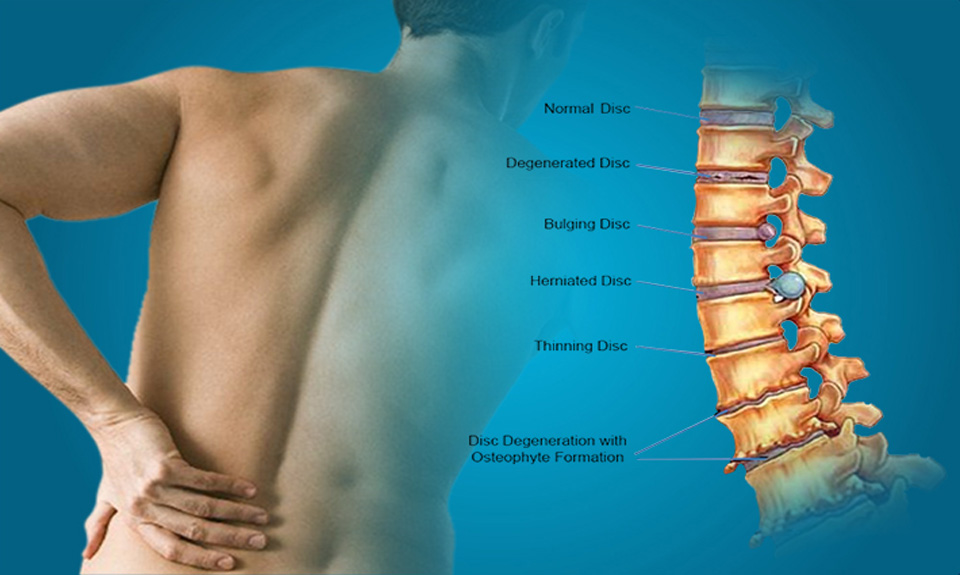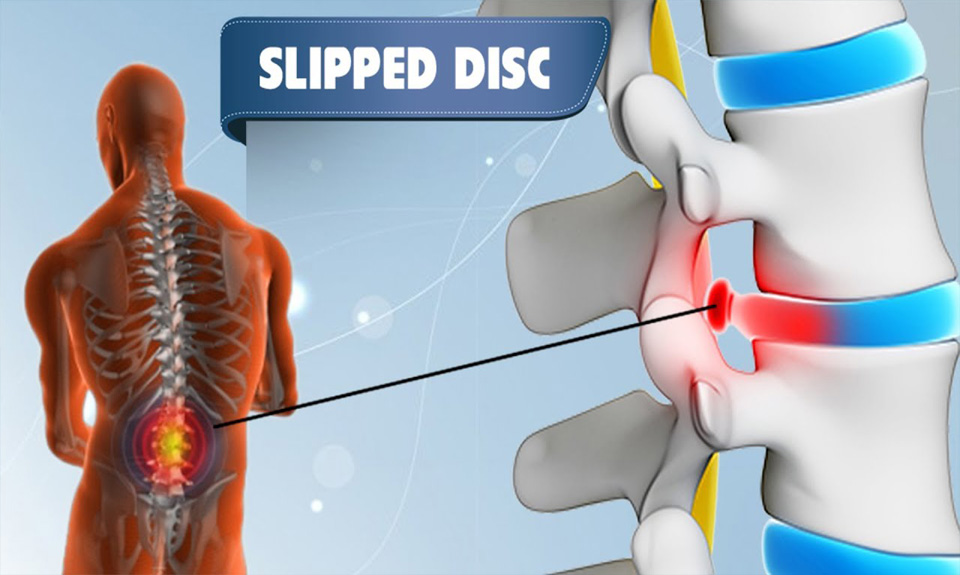Slipped Disc
A slipped disc, also known as a prolapsed or herniated disc, is where one of the discs in the spine ruptures and the gel inside leaks out. This can cause back pain as well as pain in other areas of the body. The sciatic nerve is often affected in cases of slipped disc. It is the longest nerve in the body and runs from the back of the pelvis, through the buttocks, down both legs to the feet. If pressure is placed on the sciatic nerve it can cause:
- A lasting, aching pain
- Numbness
- A tingling sensation in one or both legs
- Read more about the symptoms of a slipped disc.
- The spine
The spine consists of 24 individual bones called vertebrae which are stacked on top of each other. In between each vertebra there are protective, circular pads of cartilage (connective tissue) called discs. They have a tough, fibrous case that contains a softer, gel-like substance. The discs help to cushion the vertebrae when you move around. The spinal cord is highly sensitive and passes through the middle of the vertebral column. It contains nerve cells and bundles of nerve fibres that connect all parts of the body to the brain.
What causes a slipped disc? A slipped disc occurs when the outer case of the disc ruptures (splits), resulting in the gel inside bulging and protruding out of the disc. The damaged disc can put pressure on the whole spinal cord or on a single nerve root. This means that a slipped disc can cause pain both in the area of the protruding disc and in the area of the body that is controlled by the nerve that the disc is pressing on. It is not always clear what causes a disc to break down, although age is a common factor in many cases. As you get older, your spinal discs start to lose their water content, making them less flexible and more likely to rupture. Read more about what causes a slipped disc.
Diagnosing a slipped disc
They may also carry out a physical examination to test:
- Reflexes
- Muscle strength
- Walking ability
- Sensation in your limbs
Read more about how a slipped disc is diagnosed.
Treating a slipped disc It can take about four to six weeks to recover from a slipped disc. Treatment usually involves a combination of physical therapy, such as massage and exercise, and medication to relieve the pain. Surgery to release the compressed nerve and remove part of the disc may be considered in severe cases, or if the pain continues for longer than six weeks. In many cases, a slipped disc will eventually shrink back away from the nerve, and the pain will ease as the disc stops pressing on the affected nerve.
If you have a slipped disc, it is very important to keep active. Initially, moving may be difficult but after resting for a few days you should start to move around. This will help keep your back mobile and speed up your recovery. Any exercise you do should be gentle and not put a strain on your back. Swimming is ideal because the water supports your weight and little strain is placed on your joints. Read more about treating a slipped disc.
Preventing a slipped disc Taking a few sensible precautions, such as leading a healthy lifestyle, can help prevent back pain and lower your risk of getting a slipped disc. For example, you should:
- take regular exercise
- use a safe technique when lifting heavy objects
- always maintain a good posture when sitting and standing
Stress & Spine
At the centre we believe that for good health to be obtained naturally exercise and good nutrition is essential!.






